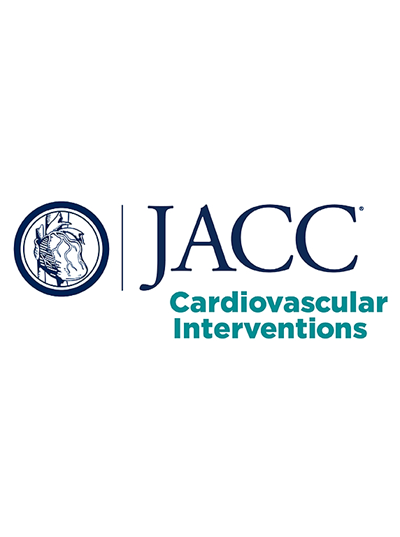Rotational Atherectomy, Lithotripsy, or Laser for Calcified Coronary Stenosis
IF 11.7
1区 医学
Q1 CARDIAC & CARDIOVASCULAR SYSTEMS
引用次数: 0
Abstract
Background
Coronary calcification negatively affects the safety and effectiveness of percutaneous coronary intervention. There is a lack of randomized comparisons among different plaque modification techniques.
Objectives
The aim of this study was to compare rotational atherectomy (RA), excimer laser coronary angioplasty (ELCA), and intravascular lithotripsy (IVL) for the treatment of patients with calcified coronary stenosis.
Methods
Patients with moderate to severe calcified coronary lesions were randomly assigned to percutaneous coronary intervention with RA, IVL, or ELCA. The primary endpoint was the percentage of stent expansion by optical coherence tomography. An intention-to-treat, noninferiority analysis was conducted.
Results
A total of 171 patients (77.2% men [n = 132], mean age 70.9 ± 8.2 years) were enrolled, 57 in each treatment arm. Clinical presentation was chronic coronary syndrome in 64.3% of patients (n = 110) and acute coronary syndrome in 35.7% (n = 61). Severe angiographic calcification was observed in 82.5% of lesions (n = 141). Procedural success rate and final minimum stent area (RA, 5.5 ± 2.1 mm2; IVL, 5.4 ± 1.8 mm2; ELCA, 5.1 ± 1.8 mm2) were similar among the 3 arms. IVL proved to be noninferior to RA, with no differences in stent expansion (RA, 86.4% ± 14.1%; IVL, 85.6% ± 13.3%; P = 0.77). ELCA did not reach noninferiority in the intention-to-treat analysis. The rate of complications was low, with no significant differences in the 3 arms but numerically lower with IVL.
Conclusions
In the first randomized trial comparing RA, IVL, and ELCA for the treatment of patients with calcified coronary lesions, IVL was noninferior to RA in terms of stent expansion. ELCA did not reach this noninferiority margin compared with RA. No significant differences were observed among the 3 arms regarding minimum stent area, procedural success rate, and complications, which were numerically lower with IVL.
求助全文
约1分钟内获得全文
求助全文
来源期刊

JACC. Cardiovascular interventions
CARDIAC & CARDIOVASCULAR SYSTEMS-
CiteScore
11.60
自引率
8.80%
发文量
756
审稿时长
4-8 weeks
期刊介绍:
JACC: Cardiovascular Interventions is a specialist journal launched by the Journal of the American College of Cardiology (JACC). It covers the entire field of interventional cardiovascular medicine, including cardiac, peripheral, and cerebrovascular interventions. The journal publishes studies that will impact the practice of interventional cardiovascular medicine, including clinical trials, experimental studies, and in-depth discussions by respected experts. To enhance visual understanding, the journal is published both in print and electronically, utilizing the latest technologies.
 求助内容:
求助内容: 应助结果提醒方式:
应助结果提醒方式:


